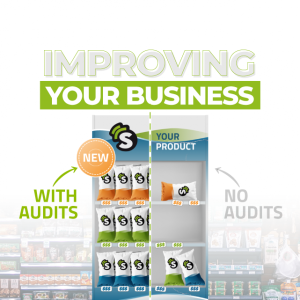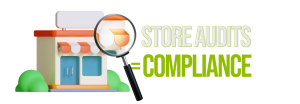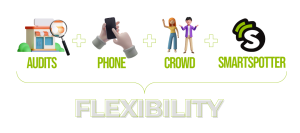Improving your Business with Mobile Store Audits
The retail industry is more competitive now than ever. As a result, businesses need to run as efficiently as possible. Store checks are a big part of ensuring proper and efficient in-store execution.

Let’s start with the basics: what does a store audit mean?
Store audits, also known as retail audits, help assess the conditions of your retail location using data, ensuring that stores are up to standard. Whether your retail business operates in one place or even a dozen, store audits are an effective way to monitor compliance when it comes to in-store execution.
Having said this, when measuring product distribution and availability, the collected information needs to be processed so we can translate insights into improvements and changes when necessary. But how do we complete store audits efficiently?
When guaranteeing optimal and efficient in-store execution, field teams are often deployed at store locations to perform various activities to maximize the business’ performance. However, efficient store audits improve compliance without putting much strain on field teams.

So, how can you conduct a store audit most efficiently?
These teams can be deployed most effectively with the help of two elements: data and flexibility.
Unfortunately, these two elements are not common in every retail audit business, as they are only rarely utilized. Procedures for completing these audits are often based on a rigid schedule that field teams must follow, which in turn is designed around criteria such as turnover, store size, and location. When this happens, efficiency is not necessarily prioritized, and stores are only visited more as a matter of habit and due process than out of necessity, which can result in visits that do not necessarily impact store performance.
Visiting stores is not a goal but rather a means to an end
The goal should be maximizing your brand performance by working with the stores to ensure compliance. That said, an efficient approach to store audits is one where locations visited are those that can and/or need to be improved.
Data
Getting the right perception of how products are performing at the store depends on how brands collect in-store data. For example, to determine which stores must be visited to ensure effectiveness, real-time information on store execution and reliable data are crucial. Thus, collecting practical and valuable information, such as actual store sales, out-of-stock, and distribution data, is an excellent way to identify inefficiencies within operations, provide insights into Lost Sales Value, and spot problem areas or bottom-necks that must be improved.
In short, these data points provide a clear view of the potential store-level profit so operational efficiency can be improved, as it also suggests action points:
The data tells you where to go, helps you identify problems to tackle, and shows you the possible outcomes of the actions you take.

Flexibility
Regarding retail execution, there’s an increasing demand for speed and immediacy, which can be achieved with flexibility and adaptability. That said, the workforce needs to be dynamic and flexible to make delegating tasks as efficient as possible.
Therefore, a crowdsourced labor force is less costly and helps optimize field teams’ efforts by enabling them to focus on stores that require their attention. Moreover, crowdsourced retail audits guarantee even more if they allow you to collect comprehensive data for your business.
It is critical to see how your brand is performing at the store. SmartSpotter gives you that visibility by mobilizing people on the ground to conduct field research anytime and anywhere.
